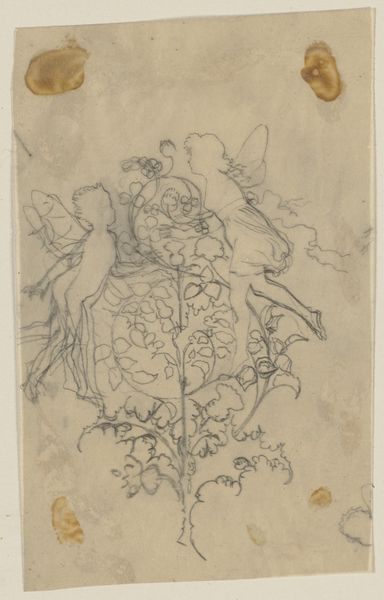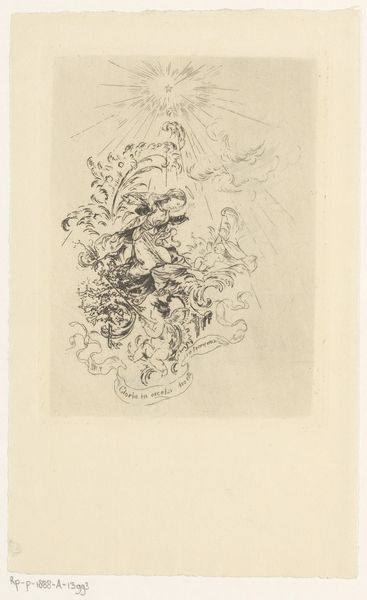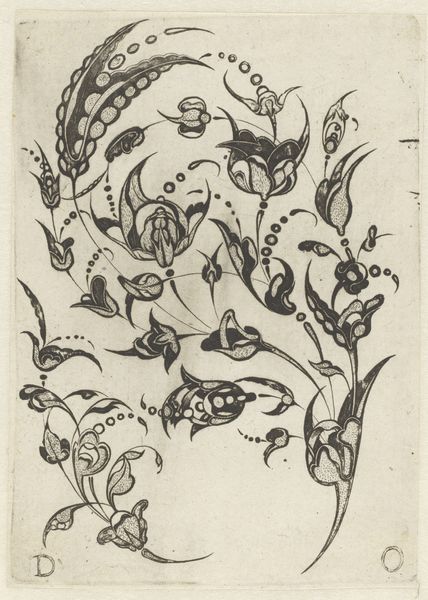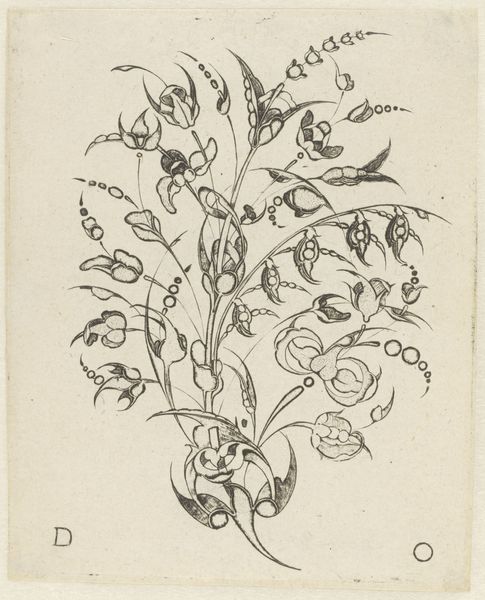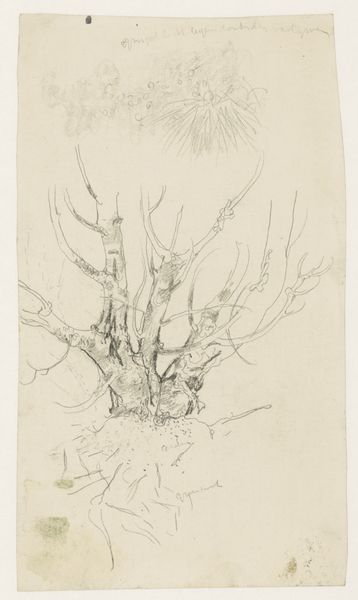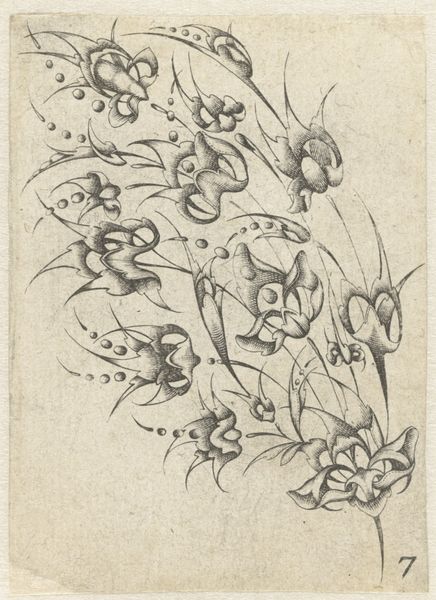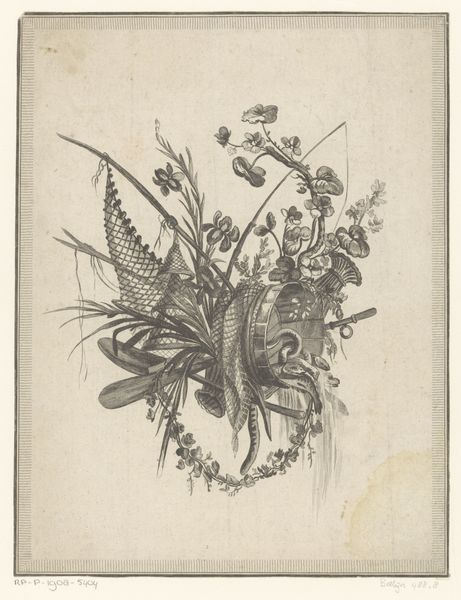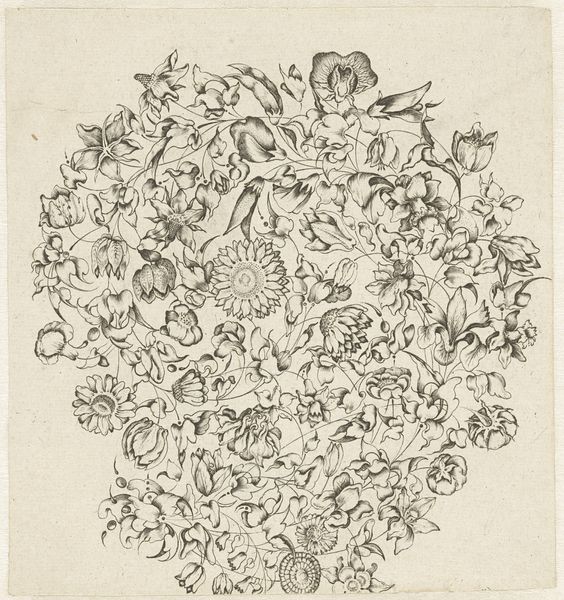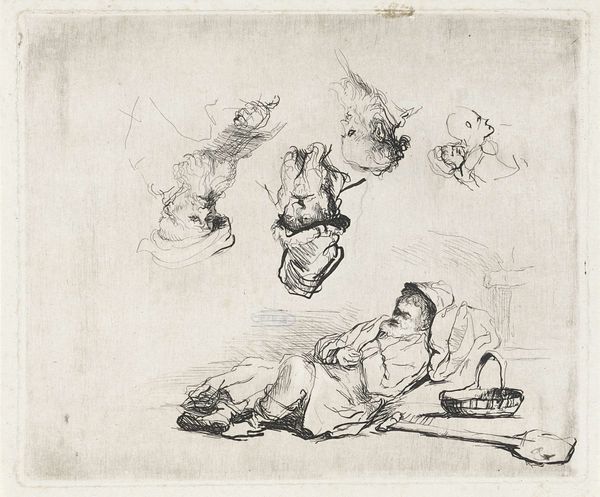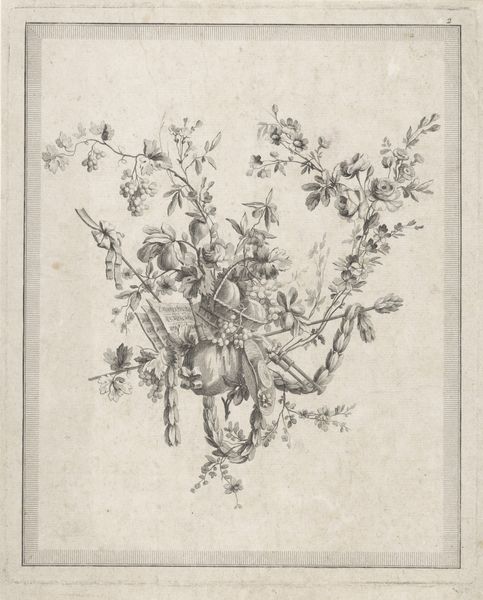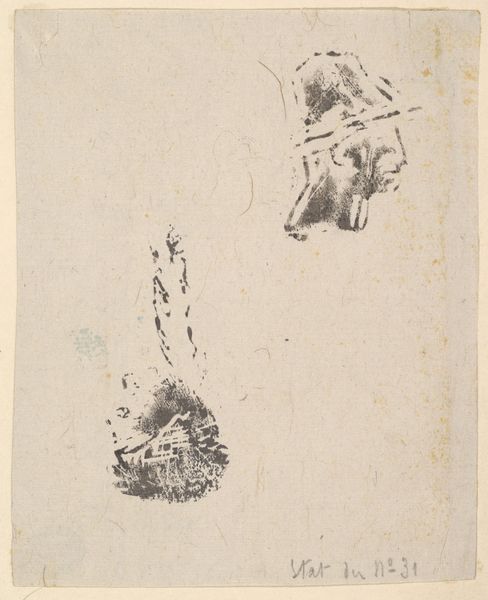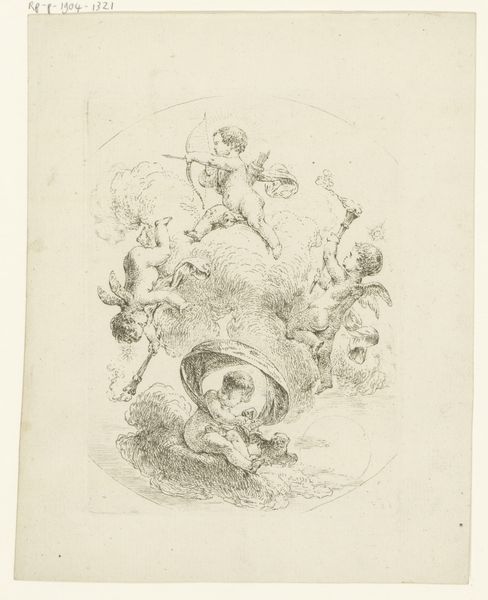
drawing, paper, impasto, pencil
#
drawing
#
pencil sketch
#
paper
#
impasto
#
pencil
#
realism
Dimensions: height 325 mm, width 496 mm
Copyright: Rijks Museum: Open Domain
Curator: Welcome. Before us is Wilhelmus Johannes Steenhoff's "Potplant," likely rendered between 1873 and 1932, and currently residing here at the Rijksmuseum. It's executed in pencil on paper. Editor: It’s charming, isn't it? So immediate and unassuming. The sketchy quality gives it a sense of quiet intimacy. You can almost feel the artist quickly capturing a moment of everyday life. Curator: Absolutely. Notice how the very means of production—the pencil, the paper—dictate the character. The swift, economical lines weren’t chosen randomly; they are tied into an established culture of valuing the rapid study. What do you think the labor conditions of artistic creation at the time? How available were materials, what was the training involved and what expectations might a patron have brought to the reception of the image? Editor: But observe the variations in line weight! The darker, more confident strokes define the large leaf, creating a focal point. The lighter lines suggest the delicate texture of the petals and pot. It all adds a lovely contrast. The tonal range achieved with a simple pencil is quite impressive. Curator: Fascinating how you point to 'simplicity' of the pencil. Is the reality more complex? Can we see how access to paper may define artistic expression or who this artist worked for. We may ask, what does it mean to represent everyday object – what do those types of representations imply at the level of social production? The “everyday” hides immense industrial apparatus. Editor: Still, Steenhoff’s mark-making feels uniquely personal. Note that repeated striation of pencil that creates both volume and shadow, especially around the leaves. Do you think that the realism style might have been chosen in defiance or obedience of the popular movement around these times? Curator: Indeed, but the question of stylistic choice can lead down deceptive alley. Think about the social value ascribed to sketching versus finished paintings at the time – and consider whether realism at the time wasn’t bound with economic access and production conditions! Editor: Perhaps so. Regardless, Steenhoff shows us something beautiful about an object easily dismissed. Curator: Yes, by examining Steenhoff’s 'Potplant', we glimpse both the artistic skill and the silent echoes of the systems and materiality that allow a 'simple sketch' to become an object of contemplation in today's culture.
Comments
No comments
Be the first to comment and join the conversation on the ultimate creative platform.
